
Why we measure this
To evaluate air quality in Saskatchewan, it is important to know the total volume of air pollution produced. That volume is influenced by the particular characteristics of individual emissions and other factors, such as weather. In this section, we examine the total amounts of three primary air pollutants – fine particulates (PM2.5), sulphur oxides (SOX) and nitrogen oxides (NOX).
Emission source location and volume are important factors to consider in evaluating and adjusting the provincial air monitoring network. The information collected from our air monitoring network will help inform provincial actions and policies that ensure air quality is safe for people and the environment.
What is happening
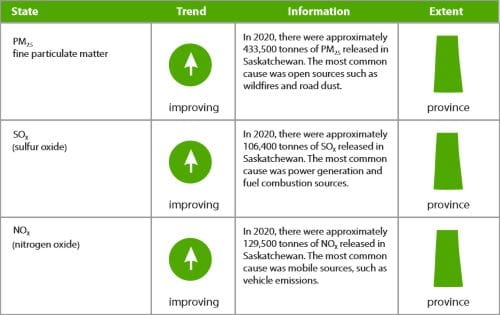
Emissions in Saskatchewan come from industrial sources, non-industrial sources, open sources and mobile sources. Industrial sources include oil and gas activity, mining and industrial facilities. Non- industrial sources mainly consist of power generation. Open sources include wildfires, agricultural operations, construction and road dust. Mobile sources include vehicle emissions.
Generally, SOX and NOX emissions have been dropping in Saskatchewan since 2010. However, in 2019 and 2020 we saw a decrease in fine particulates (PM2.5) emissions, mainly due to relatively quiet wildfire activity.
Levels of sulphur oxides (SOX) and nitrogen oxides (NOX) have been dropping is Saskatchewan since 2010.
What we are doing
Saskatchewan has a number of tools available to ensure air quality is safe for people and the environment. The Environmental Management and Protection Act, 2010 requires an environmental protection plan for major industrial emission sources. Companies must make sure their operations meet Saskatchewan's air quality standards to ensure they are safe for human health and the environment. The Ministry of Environment has a compliance assurance program in place to ensure environmental protection plans are being followed.
The ministry supports Canada's National Pollutant Release Inventory (NPRI) Program. NPRI collects, stores and distributes annual air emissions figures from all reporting sources.
Saskatchewan has committed to an Air Quality Management System established by the Canadian Council of Ministers of the Environment. This management system will help the ministry identify and resolve potential air quality issues, including issues related to pollutant sources.
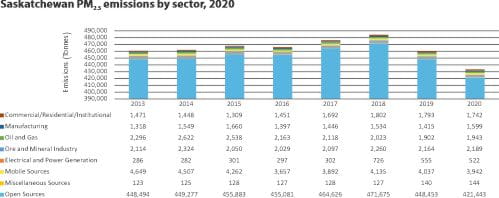
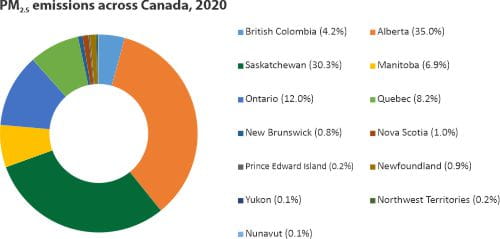
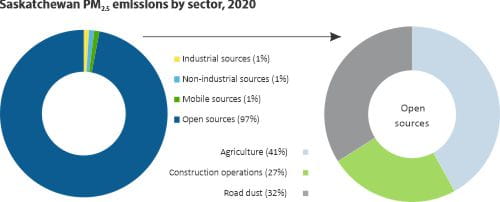
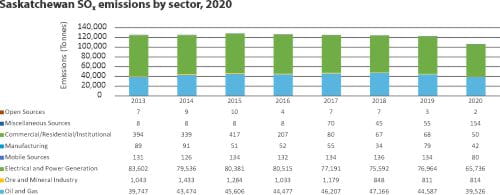

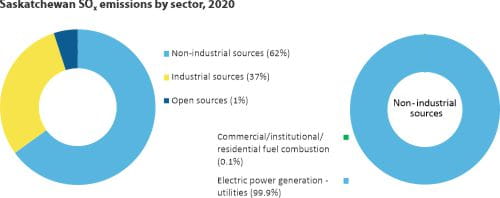
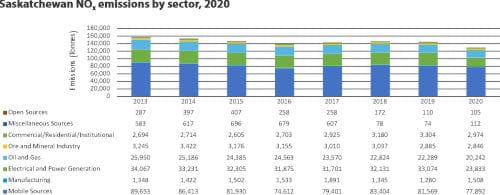
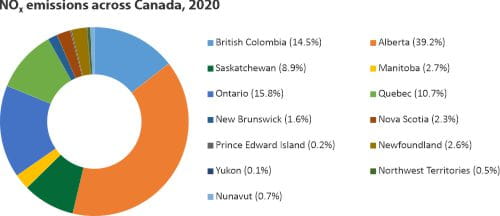
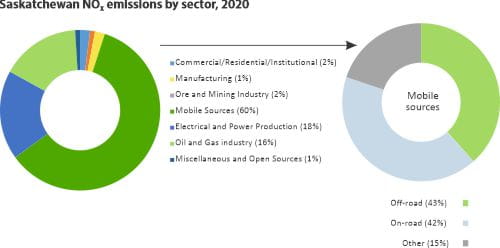
All data in graphs sourced from Environment and Climate Change Canada.
